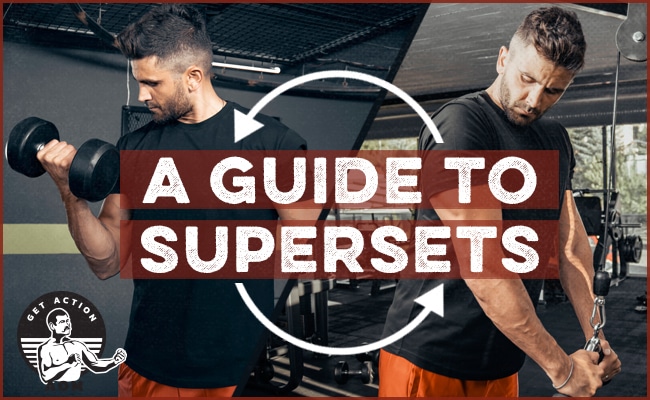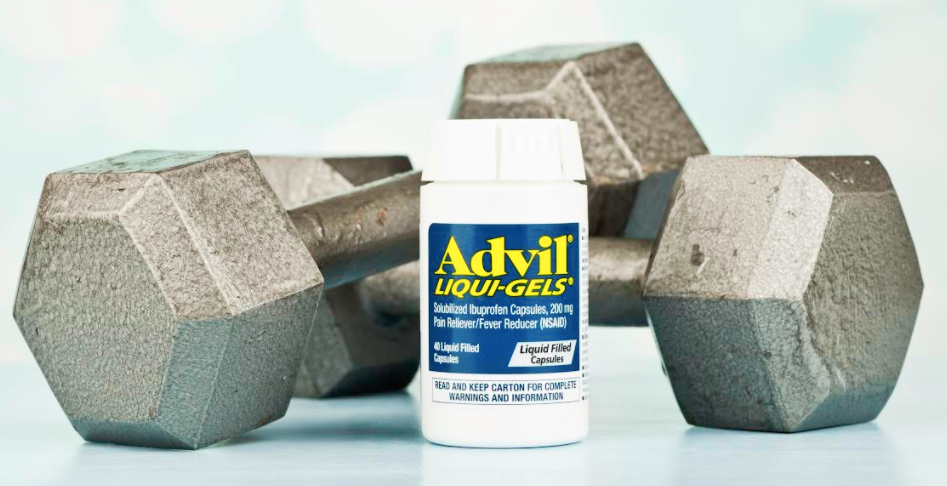
You’re a busy man. You’ve got work and community obligations. You want to spend quality time with your family and friends. Maybe you’ve made it a goal to read more books this year.
How can you fit in a workout with so much on your plate?
Supersets.
The answer is supersets.
What Is a Superset?
A superset is a specific type of workout set wherein you perform two separate exercises back to back without rest between them. There are three different types of supersets:
- Antagonist supersets: supersets involving two exercises that work opposing muscle groups. For example, chest press followed immediately by back rows, or leg extensions followed immediately by leg curls.
- Alternate-peripheral supersets: supersets involving two exercises alternating between upper and lower body movements. For example, a squat followed immediately by the bench press, or a deadlift followed immediately by a shoulder press.
- Compound supersets: supersets involving two exercises that work the same muscle groups using similar movements. For example, tricep extensions followed immediately by tricep pulldowns, or a barbell bench press followed immediately by a dumbbell bench press.
The type of superset you choose will depend on your overall goals for training. We’ll walk you through how to determine which superset scheme to use here in a bit.
Typically, when you perform a superset, you do the two exercises back to back without any rest. After completing the second exercise in each pair, you then take a rest break before doing your next superset. A standard rest interval between weightlifting sets is about two minutes. When you’re doing supersets in which the first and second exercises in the pair work different muscle groups, the muscles worked by the first exercise will have already gotten some rest while you performed the second exercise, so you may be able to take a rest break that’s a little shorter than that.
If you’re prioritizing conditioning over strength, or it’s a one-off situation when you’re especially pressed for time, you can skip the break between supersets altogether and keep going until you’ve completed your prescribed sets and reps. Supersets without breaks are a great option for a day when you only have 15 minutes available for a workout.
The Benefits of Supersets
Supersets save you time. The primary benefit of supersets is that they save time. Instead of resting between exercises, you move immediately into the next exercise. While you take a short rest after you’ve completed a superset, you still end up saving time by doing two exercises back to back.
Supersets get your heart rate up. Because you’re not resting between exercises, supersetting makes for a tremendous metabolic conditioning workout. Your heart rate gets going and you get nice and sweaty. Great for burning calories.
Supersets are great for hypertrophy. Hypertrophy means muscle growth. For many dudes, getting big muscles is the primary reason they lift weights. For muscle hypertrophy, you want to increase the volume, or reps, you do in a workout, and supersetting allows you to get more reps done in a shorter time.
Supersets give you a nice pump. I love the pump I get after I do a superset of curls and tricep pulldowns. I feel like 1970s Arnold, if only for a few glorious minutes.
Supersets are fun. Supersets can help you break up the monotony of a workout and keep it interesting. Instead of sitting around between sets swiping through TikTok, you can keep moving and pumping.
The Downsides of Supersets
Supersets could interfere with strength gains on main barbell lifts. If you’re barbell training and doing the main lifts, trying to superset those movements could reduce strength improvement. To build pure strength, you have to train with heavy weights using 80% to 90% of your one-rep max. You got to lift heavy. When you lift heavy, you don’t just fatigue the muscles you’re training, you fatigue your entire central nervous system. Supersetting heavy squats + a heavy bench press could create so much fatigue that you won’t be able to complete the prescribed reps at the prescribed weight.
If strength is your goal, don’t superset those movements. If you’re just training for overall health, go right ahead and superset your primary barbell lifts.
Supersets can be tricky in a public gym. Supersets often require you to toggle back and forth between two pieces of gym equipment, like a preacher curl setup and a tricep pulldown machine. If someone starts using the unoccupied tricep pulldown machine while you’re finishing up your set of preacher curls, you’ll have to wait while that person finishes their set. It’s not always an issue, but when it is, it’s annoying.
Choosing the Right Superset Scheme
The superset scheme you choose will depend on your goals and time constraints. For all of them, doing three supersets of each exercise pair is a good average number to aim for.
Antagonist Supersets. I like to use antagonist supersets for my accessory work after I complete my main lifts for the day. So on days I deadlift or squat, I’ll end my workout with a superset of leg extensions + leg curls, or lunges + leg curls. On days I bench press or shoulder press, I do a superset of bicep curls + tricep pulldowns.
Supersetting my accessory work allows me to get a lot of volume in a short amount of time which is good for hypertrophy, and it’s a way I can get some of my metabolic conditioning in.
Here are some examples of antagonist supersets you could do:
- Leg Extensions + Leg Curls
- Bicep Curls + Tricep Pulldowns
- Bench Press + Barbell Rows
- Dips + Seated Cable Rows
- Barbell Squat + Romanian Deadlift
- Shoulder Press + Chin-ups
- Push-ups + Chin-ups
Alternate-Peripheral Supersets. If you’re looking to do as much work as you can in as little time as possible, consider using an alternate-peripheral superset. This is a superset where you do a lower-body movement followed by an upper-body movement.
Here’s an example of this approach using the four main barbell lifts: squat, deadlift, bench press, and shoulder press:
- Monday: Squats + Bench Press
- Tuesday: Deadlifts + Shoulder Press
- Wednesday: Off
- Thursday: Squats + Bench Press
- Friday: Deadlifts + Shoulder Press
As discussed above, supersetting the main barbell lifts could reduce overall strength gains, but if supersetting fits your schedule and allows you to get all your work in, or you just enjoy doing it that way, then go for it.
Compound Supersets. Bodybuilders have used compound supersets for decades to build and shape their bodies. Doing similar movements, one right after the other, is a great way to get a good pump and the volume you need for hypertrophy. Many lifters do compound supersets as a “finisher” for a workout. On arm day, for example, you could finish with compound supersets of two different kinds of bicep curls.
Here are some compound superset ideas to consider:
- Barbell Bench Press + Dumbbell Bench Press
- Barbell Shoulder Press + Arnold Shoulder Press
- Barbell Squat + Lunges
- EZ Curl Bicep Curls + Hammer Curls
- Tricep Extensions + Tricep Pulldowns
- Lat Pulldowns + Pull-ups
- Romanian Deadlifts + Leg Curls
Overall, the best way to choose a superset is to experiment and see what works for you.
Supersets are a great way to get your workout done faster and to mix up your routine. Give them a try the next time you hit the gym.







